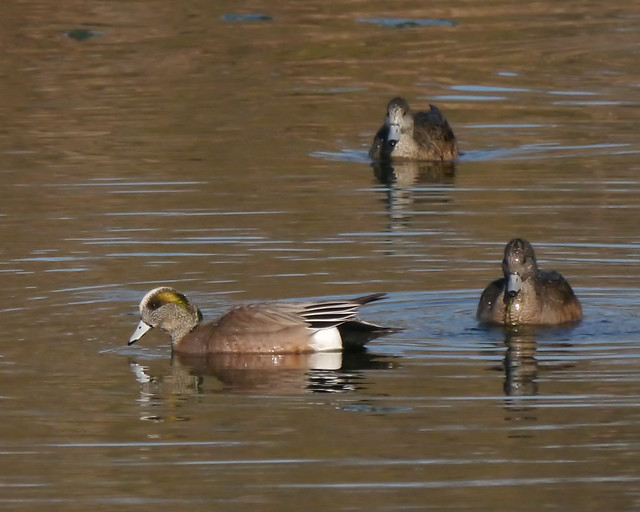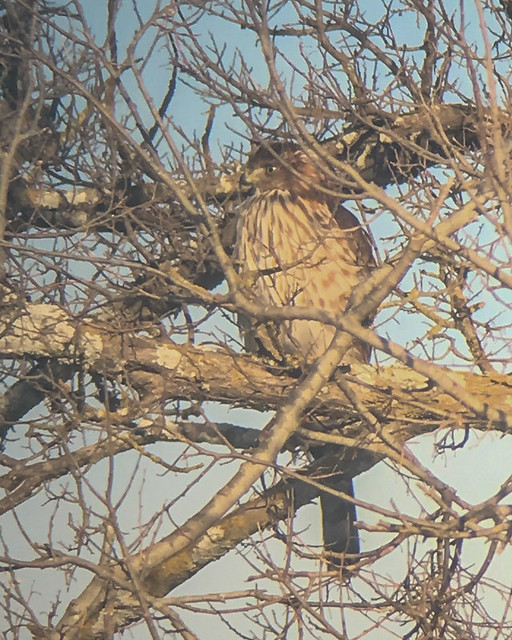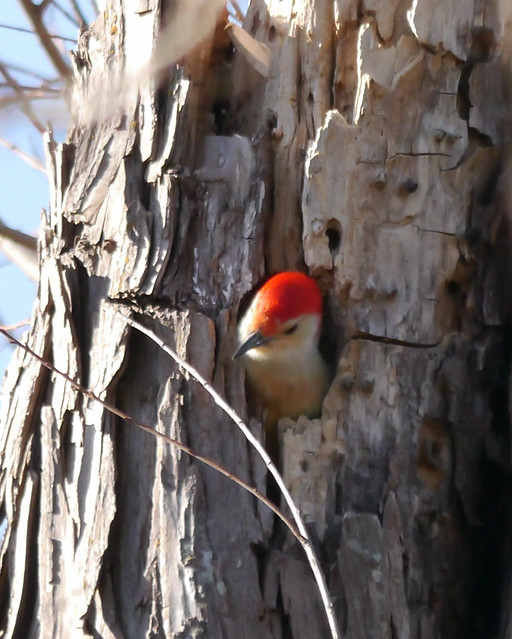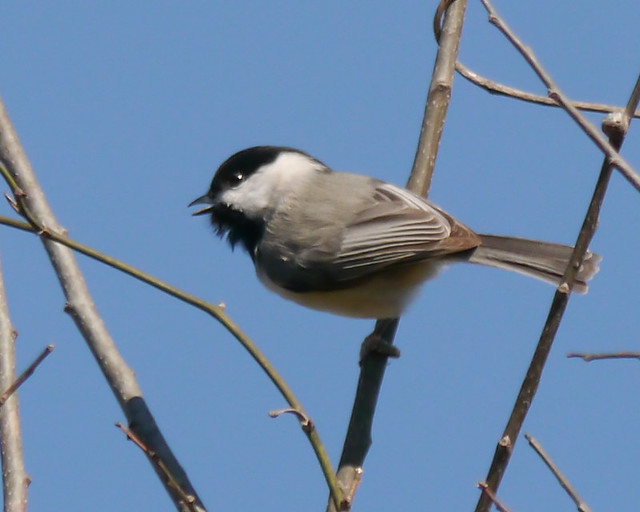Nine folks joined me this morning for the monthly group walk. We started at the Parmer Village end of Lake Creek Trail and spent almost three hours covering only about one mile. (Birding is not good exercise!) The morning started out cold but luckily the wind was very light. It turned out to be a beautiful clear morning and we found 41 species of birds. Things were uneventful until we reached the last dam on the creek where we enjoyed stunning views of the American Wigeons and Gadwalls in the low morning light. I especially enjoyed how the green stripe on the male wigeons' faces appeared golden sometimes, like in this photo:
It's always worth waiting around the last dam to see what might show up, and this morning a juvenile Cooper's Hawk flew in and perched for awhile in a bare tree across the water from us, letting everyone get good looks at it through the spotting scope. Here's an iPhone photo I got through the scope:
When this hawk flew in it was relatively unobtrusive to the other birds around, but I did notice that the sounds the birds were making changed from a mix of songs and calls to more subdued contact calls. Cooper's Hawks specialize in hunting other birds, so the other birds a acutely aware of their presence. When this hawk flew off, some ducks, Killdeers, and a Greater Yellowlegs instantly alarmed.
Later further upstream I think we saw this same hawk again, and we got to see a much more interesting reaction to it from the other birds in the creek bed. We were watching a single Greater Yellowlegs, a group of loafing Least Sandpipers, and several Yellow-rumped Warblers, all in the creek bed upstream of us. Behind us, downstream, we heard several Killdeer start to alarm. The birds in front of us immediately reacted and flew further upstream or scattered to cover on the edges of the creek bed. Then (probably) the same Cooper's Hawk came into view downstream and flew past us going upstream and out of view. The birds we were watching hadn't reacted to seeing the hawk, they reacted to other birds' alarm calls before the hawk was even visible. This inexperienced juvenile hawk was causing a plow effect of alarms and escape flights of birds as it flew up the creek bed. This all happened while ten people were standing on a low water crossing right in the middle of the creek bed, but the birds weren't worried about us. They were used to seeing people there.
This is one of the remarkable things about birding. You can see wildlife interactions like this in a suburban setting without hiding from the animals yourself. Amazing! (If this intrigues you, check out an exciting new effort to understand these kinds of reactions called Bird Language.)
Some other birds we enjoyed seeing were this White-throated Sparrow:
this Red-bellied Woodpecker singing from inside a hole in a dead tree:
and this vocalizing Carolina Chickadee:
Here's our complete bird list. And here are a few more photos. What a fun morning!






2 comments:
Many of the students making research on birds and their migration it is really a good subject if anyone need good writing advice choose the best expert from online with the support of any top dissertation writing help services provider.
thanks for sharing your nice and informative post .Cheap dissertation writing services
Post a Comment